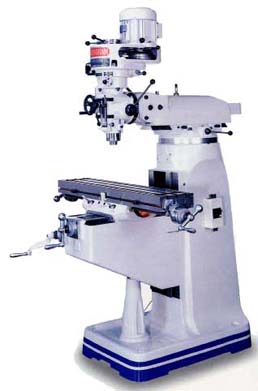The ram, basically a sliding member of the machine's overarm, enables the spindles to move in and out parallel to the movement of the saddle; i.e. in the Y direction. In the turret-ram styles, the entire ram overarm can pivot about the main upright axis of the column's backbone, thus positioning the spindle in an arc sweeping over the workpiece table to describe an arc. Being a function of the spindle-drive motor's proximity to the quill and spindle, it provides capability to tilt the spindle axis away from the vertical, either by inclining the Z-axis left and right, tilting it forward and aft, or both.
Typical operations are end milling, slotting, dovetailing, precision boring and tapping etc. ¡§ Bridgeport ¡¨ is the name most usually associated with this very versatile type of machine.






